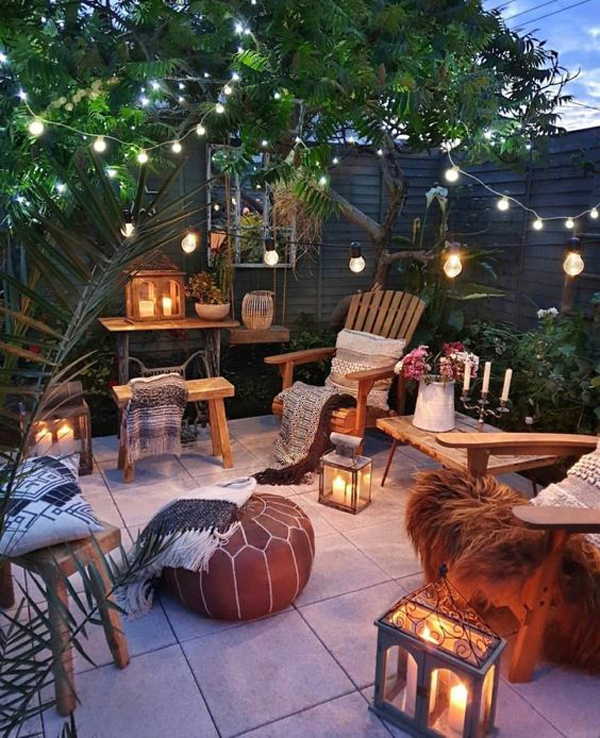Don't let a small outdoor space limit your creativity—there are numerous ways to transform even the tiniest area into a charming and functional oasis.
With apartment living becoming increasingly common in urban areas, there's a growing market for practical solutions tailored to small outdoor spaces. This is great news for anyone in search of compact patio furniture, as there are now many options available beyond the traditional bistro set.
We've compiled a list of our five essential considerations to help you turn your compact outdoor space into a comfortable, stylish, and functional retreat without breaking the bank.
1. Comfort
Having a small outdoor space doesn't mean you have to sacrifice comfort. Furnish your condo balcony or similar area with cozy and comfortable pieces.
Ambient lighting can create a welcoming atmosphere. Lanterns and string lights are popular, affordable, and easy to find. If your space allows, consider installing pot lights or pendant lights. Battery-operated or solar-powered lighting can be great alternatives if electrical outlets are unavailable, and LED candles are a safer choice for open-flame lanterns.

2. Privacy
Small outdoor spaces often lack privacy, making relaxation or entertaining awkward. To create a more secluded atmosphere, use privacy screens, room dividers, vertical gardens, or outdoor curtains to shield your space from neighbors.

3. Style
Gone are the days of minimalist balconies with just a bistro set. Today, many patio furniture lines cater specifically to small spaces, making it easy to find pieces that reflect your personal style.
Add color and texture with pillows and throws, and don't neglect the walls—hang artwork, plants, and signs. Lighting not only sets the mood but also serves as decor. Explore different sizes, styles, and colors to suit your space.
Don't overlook the floor; enhance your balcony's style with an outdoor rug, faux wood panels, or painted/stained concrete to match your aesthetic.
4. Durability
While style is important, so is functionality. Choose furniture and decor designed to withstand the elements. Look for items made from aluminum, teak, stainless steel, or weather-resistant wicker. These materials are durable and can handle various climates. High-quality, weather-resistant furniture is a wise investment, especially if you plan to leave it outside year-round.
Consider built-in benches for seating and additional storage for outdoor items and textiles.

5. Budget
When shopping for budget-friendly outdoor furnishings, prioritize durable materials to avoid frequent replacements due to wear and tear.
You can find second-hand furniture and decor on online marketplaces or at thrift stores. Repurpose items you already own and store them indoors during the winter if they can't withstand cold weather.
From cozy furniture to innovative lighting, there are endless possibilities to create a comfortable and functional balcony or patio. Happy decorating!
Soruce: Royal LePage Team Realty





.png)
